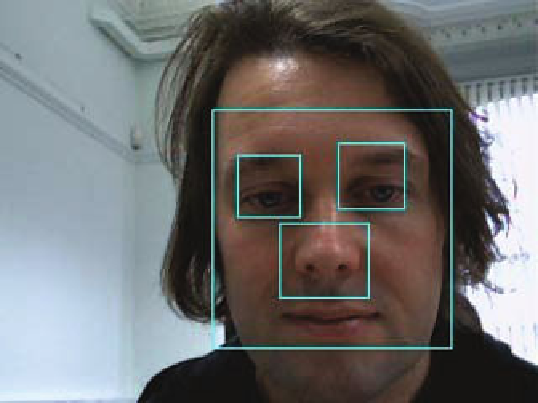Information Technology Reference
In-Depth Information
Fig. 1
O
PEN
CV face and local feature detection using nested Haar cascades
have several features which make them suitable for machine recognition: they are
stable, with high contrast, which makes them easy to acquire even in a low resolution
image. Also, they sit on a convex part of the face, which makes them less susceptible
to shadow and illumination problems.
It is interesting to note that faces can be stretched or compressed without any
loss of recognisability. Humans may be able to adapt to such transformations be-
cause they are similar to the effect of a facial rotation out-of-plane. It is notable that
ratios of distances between features in the same dimension remain constant under
stretching/compression transformations. Humans may use such
iso-dimension ra-
tios
for recognition. This suggests that machine facial recognition algorithms could
adopt the same approach. Instead of the usual approach of pose estimation (see dis-
cussion below), the facial metric could be based on ratios which are invariant to
changes in scale and rotation. This idea will be developed further in section 4.1.
Finally, we note that humans make temporal associations when observing the
movements of someone else's face. This helps to build a more general model of the
face.
1.2.2
Face Recognition by Machine
The most important face recognition algorithms and techniques are discussed in [35]
and [34].
Holistic
,or
appearance-based
, approaches to face recognition were pioneered
by Turk
et. al
in their paper on Eigenfaces [30], where differences in human faces
are represented by a set of eigenvectors. A covariance matrix is calculated over a set
of training images for the face of an individual. The eigenvectors and eigenvalues
of the covariance matrix are extracted using Principal Component Analysis (PCA).




Search WWH ::

Custom Search